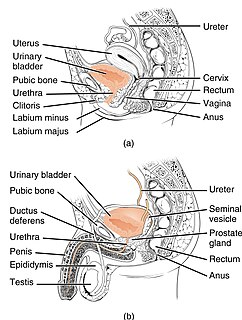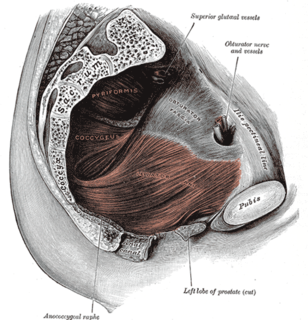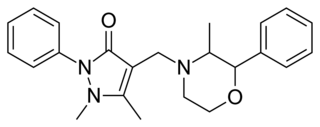
Urinary incontinence (UI), also known as involuntary urination, is any uncontrolled leakage of urine. It is a common and distressing problem, which may have a large impact on quality of life. It has been identified as an important issue in geriatric health care. The term enuresis is often used to refer to urinary incontinence primarily in children, such as nocturnal enuresis.

Fecal incontinence (FI), or in some forms encopresis, is a lack of control over defecation, leading to involuntary loss of bowel contents, both liquid stool elements and mucus, or solid feces. When this loss includes flatus (gas) it is referred to as anal incontinence. FI is a sign or a symptom, not a diagnosis. Incontinence can result from different causes and might occur with either constipation or diarrhea. Continence is maintained by several interrelated factors, including the anal sampling mechanism, and usually there is more than one deficiency of these mechanisms for incontinence to develop. The most common causes are thought to be immediate or delayed damage from childbirth, complications from prior anorectal surgery, altered bowel habits, and receptive anal sex. An estimated 2.2% of community dwelling adults are affected. However, reported prevalence figures vary. A prevalence of 8.39% among non-institutionalized U.S adults between 2005 and 2010 has been reported and among institutionalized elders figures come close to 50%.

Enuresis is a repeated inability to control urination. Use of the term is usually limited to describing people old enough to be expected to exercise such control. Involuntary urination is also known as urinary incontinence. The term "enuresis" comes from the Ancient Greek: ἐνούρησις, romanized: enoúrēsis.

Kegel exercise, also known as pelvic-floor exercise, involves repeatedly contracting and relaxing the muscles that form part of the pelvic floor, now sometimes colloquially referred to as the "Kegel muscles". The exercise can be performed many times a day, for several minutes at a time but takes one to three months to begin to have an effect.

Duloxetine, sold under the brand name Cymbalta among others, is a medication used to treat major depressive disorder, generalized anxiety disorder, fibromyalgia, and neuropathic pain. It is taken by mouth.
Pelvic floor dysfunction is an umbrella term for a variety of disorders that occur when pelvic floor muscles and ligaments are impaired. Although this condition predominantly affects females, up to 16 percent of males suffer as well. Symptoms include pelvic pain, pressure, pain during sex, urinary incontinence (UI), incomplete emptying of feces, and visible organ protrusion. Tissues surrounding the pelvic organs may have increased or decreased sensitivity or irritation resulting in pelvic pain. Underlying causes of pelvic pain are often difficult to determine. The condition affects up to 50 percent of women who have given birth.

Prostatectomy as a medical term refers to the surgical removal of all or part of the prostate gland. This operation is done for benign conditions that cause urinary retention, as well as for prostate cancer and for other cancers of the pelvis.
Percutaneous tibial nerve stimulation (PTNS), also referred to as posterior tibial nerve stimulation, is the least invasive form of neuromodulation used to treat overactive bladder (OAB) and the associated symptoms of urinary urgency, urinary frequency and urge incontinence. These urinary symptoms may also occur with interstitial cystitis and following a radical prostatectomy. Outside the United States, PTNS is also used to treat fecal incontinence.

Stress incontinence, also known as stress urinary incontinence (SUI) or effort incontinence is a form of urinary incontinence. It is due to inadequate closure of the bladder outlet by the urethral sphincter.

Overactive bladder (OAB) is a condition where there is a frequent feeling of needing to urinate to a degree that it negatively affects a person's life. The frequent need to urinate may occur during the day, at night, or both. If there is loss of bladder control then it is known as urge incontinence. More than 40% of people with overactive bladder have incontinence. Conversely, about 40% to 70% of urinary incontinence is due to overactive bladder. Overactive bladder is not life-threatening, but most people with the condition have problems for years.
Sacral nerve stimulation, also termed sacral neuromodulation, is a type of medical electrical stimulation therapy.
Lower urinary tract symptoms (LUTS) refer to a group of clinical symptoms involving the bladder, urinary sphincter, urethra and, in men, the prostate. Although LUTS is a preferred term for prostatism, and is more commonly applied to men, lower urinary tract symptoms also affect women.

Morazone is a nonsteroidal anti-inflammatory drug (NSAID), originally developed by the German pharmaceutical company Ravensberg in the 1950s, which is used as an analgesic. It produces phenmetrazine as a major metabolite and has been reported to have been abused as a recreational drug in the past.
Giggle incontinence, giggle enuresis or enuresis risoria is the involuntary release of urine in response to giggling or laughter. The bladder may empty completely or only partially.
Mirabegron, sold under the brand name Myrbetriq among others, is a medication used to treat overactive bladder. Its benefits are similar to antimuscarinic medication such as solifenacin or tolterodine. In the United Kingdom it is less preferred to antimuscarinic medication such as oxybutynin. It is taken by mouth.

Indolyl-3-acryloylglycine, also known as trans-indolyl-3-acryloylglycine, or IAG for short, is a compound consisting of an indole group attached to an acrylic acid moiety, which is in turn attached to a glycine molecule. This compound has been shown to isomerize when exposed to light. It is likely a metabolic intermediate in the biosynthesis of tryptophan, and is synthesized from tryptophan via indolepropionic acid and indoleacrylicacid (IAcrA). It is also likely that IAcrA is converted into IAG in the gut wall. It may also be produced by certain elements of the mammalian gut microbiota by phenylalanine ammonia-lyase. Identifiable in the urine by high-performance liquid chromatography, it may be a biomarker for autism spectrum disorders, as demonstrated by the research of Paul Shattock and other researchers from Australia. These researchers have reported that urinary levels of IAG are much higher in autistic children than in controls; however, other researchers have found no association between IAG concentrations in the urine and autism. Its excretion in the urine may also be changed in Hartnup disease and celiac disease, as well as photodermatosis, muscular dystrophy, and liver cirrhosis.

An artificial urinary sphincter (AUS) is an implanted device to treat moderate to severe stress urinary incontinence, most commonly in men. The AUS is designed to supplement the function of the natural urinary sphincter that restricts urine flow out of the bladder.

Serlopitant (INN, codenamed VPD-737) is a drug which acts as an NK1 receptor antagonist. It was assessed in clinical trials for the treatment of urinary incontinence and overactive bladder, but while it was superior to placebo it provided no advantage over existing approved drugs, and was not approved for further development for this indication. Serlopitant is now undergoing clinical trials for the treatment of chronic pruritus (itch)

If medical treatment is not effective, surgery may need to be performed for benign prostatic hyperplasia.

Vibegron, sold under the brand name Gemtesa, is a medication for the treatment of overactive bladder.














